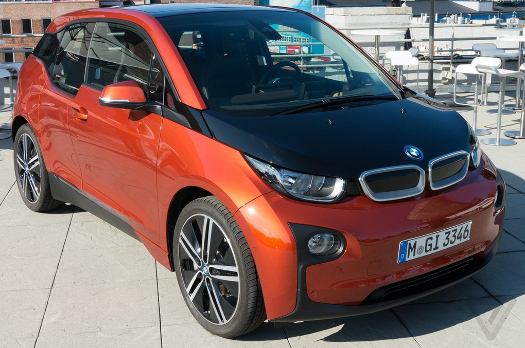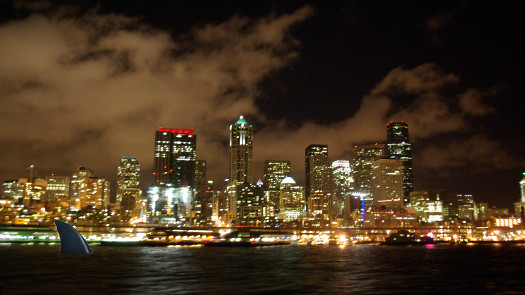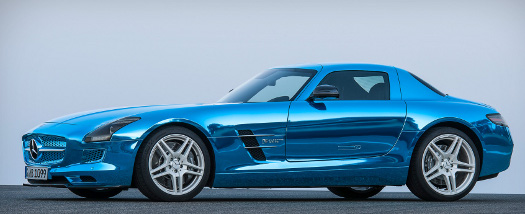Dirty, dirty, disk
Despite how many times I’ve seen it, I am still occasionally surprised when I crack open an old server and see just how much dirt there is caked on everything. This latest example came out of a 9×9 that has been in service, most likely without ever being opened, for years.
Missed it… by ‘THAT’ much
We’re all very excited to have Raul back in Seattle!
Windows Phone App Studio
Microsoft is clearly playing catch-up in the phone game. In both hardware sales and app catalogs, Apple and Android have a large lead. Today brings another arrow aimed at both of those shortcomings. The Windows Phone App Studio sets out to lower the bar for entry to the app building game. Using a web-based template, users can use a variety of templates to get started creating their first app and then side-load it on their phone.
Of course, with the addition of a dev account, that app can also be submitted to the Windows Phone Store. That could open the floodgates that swell available app numbers. Granted, a lot of those will not be of the best quality, but have you had a good look around the Apple and Android app stores? It wouldn’t be anything any different.
The more interesting bit though, and possibly what could lure users away from their iPhones and Android devices, is the ability to make your own personal app, with no intention of every making it available to the public. If Microsoft can develop the web based studio to the point that useful one-off apps are reliable and reasonably easy to get up and running, it could be a very attractive feature of the Windows Phone system.
At the moment, the interface is pretty slick, but there are some growing pains. Logos can only be png, and while there are feed reading bits built into the system, it seems an atom feed isn’t supported. Still, it is certainly an interesting idea.
Oh… Discovery Channel…
I don’t think those words mean what you think they mean…
The latest in an ever-growing line of disappointments from the Discovery Channel took place Sunday night as they kicked off the yearly Shark Week. The big event was Megalodon: The Monster Shark That Lives. The “documentary” was supposed to reveal evidence that the long-extinct creature was still out there in the oceans. They had “scientists”, on an “expedition”, “eye-witness accounts”, “photographic evidence”… If you are wondering about my sudden penchant for putting things in quotes, it’s because every last bit of this thing was fiction. There was no sunken boat. No whale bitten in half. The scientist was an actor. Etc.. etc… etc… There’s a great open letter to Discovery by Christie Wilcox at Discover Magazine’s website that breaks it all down.
And that’s either sad, or infuriating, depending on how you look at it. Even more so if you take a hop over to the Discovery Corporate page and check out the description of what the Discovery Channel is intended (or claims) to be.
Discovery Channel, one of the most widely distributed cable networks in the U.S., is dedicated to creating the highest quality non-fiction content that informs and entertains its consumers about the world in all its wonder, diversity and amazement.
Quality non-fiction they say. In all seriousness, Megalodon was just slightly less fictitious than Sharknado. It’s so absurd at its core that my ridiculous image opening this article could have been used as ‘proof’ that giant sharks are roaming the Seattle waterfront. And when you add it to the sad likes of Amish Mafia, Devil’s Ride, and Saint Hoods it doesn’t paint a very nice picture of how far the channel has fallen from its original vision.
Hello, Tokyo!
A visual treat for Friday. Thanks to a wonderful merger of the internet, modern photography technology, and a great idea… we can all sit at our computers and marvel at the intricacies of modern day Tokyo. This is the work of photographer Jeffrey Martin, and you are only seeing the tiniest slice of what he has done in the above image. The actual image is 600,000 pixels wide and encompasses a 360 degree view of Tokyo as seen from Tokyo Tower. To really appreciate it, you have to check out the interactive version on 360gigapixels.com.
To give you an idea of the scale of this thing, here is a 100% crop of the screen zoomed in all the way on a billboard featuring Pelé.
And here is a 100% crop zoomed all the way out. The red arrow shows you where the Pelé billboard is. Amazing!
2nd Germiest Attraction, Eww!!
Seattle’s Gum Wall has been ranked among the world’s top five “Germiest Attractions.” In a list released Thursday by TripAdvisor, the popular attraction, located outside the Market Theatre at Pike Place Market, comes in at #2, following Ireland’s Blarney Stone in the top spot.
The SLS AMG Coupé Electric Drive
To go along with the new BMW, I thought I would throw this up here. It’s the new Mercedes SLS AMG Coupé Electric Drive. Yes, an AMG electric car. You might scratch your head at that idea, but it has the numbers to back up that fancy AMG plate: 740 HP – 738 pounds of torque – 0 to 60 in 3.9 seconds – 155 mph top speed. According to Top Gear, it’s pretty remarkable.
It is still ridiculously expensive. The ED version will set you back $535,000, vs $200,000 for the standard SLS AMG Coupé and $275,000 for the black series. It also has a 155 mile range and takes three hours to charge. So, we’re looking at the same issues here, but the notable takeaway is that Mercedes is making an electric version of a car from the regular lineup, which is a step in the right direction.
A new EV from BMW, with the same old issues

BMW has announced the i3, their first from the ground up electric vehicle. It’s interesting, but at the end of the day it runs up against the same old stumbling blocks that EVs always do. To start, there is the price. $41,350 might not be a lot of beans for A BMW, but it is an awful lot for THAT BMW. You can get into a 3 or 4 series car for less than that. I suppose the argument is that you’ll make that extra coin back in not buying gasoline, but I don’t think the math really works there either.
Let’s do some back of the napkin calculations. Based on looks and capability, the i3 is in the ballpark of things like Honda’s Fit or Ford’s Fiesta. You can get into either of those for around 14 or 16 K. The fun bit of math comes in discovering how far you could drive those cars for that extra 25 grand. At $4 a gallon, you’re looking at around 215,000 miles (14 years at 15K miles per) before the break even point. That is without factoring in any money spent recharging the i3. With that added, the number increases.
To be fair, a Fit or a Fiesta might not be a perfect comparison to the i3. There is something of a cachet to driving a BMW that one doesn’t necessarily find in a Ford. But the Fit and Fiesta are a lot closer to the i3 than the i3 is to its $40,000 internal combustion peers. And getting back to that charging thing… The range of the i3 is 80 to 100 miles. Perfectly usable for certain people, in certain situations, but once again lacking in one of the crucial areas that EVs will need to conquer in order to attain the mass appeal that will bring about an actual change.
So, meet the new EV boss. Same as the old boss. It’s really expensive, with an iffy range, and refueling/recharging remain orders of magnitude apart. At best, it’s one small step for EV kind, but we are really no closer to the alternative fuel future.
Friday Flashback: Microsoft Paint
If you’re like me, you probably remember Paint as one of the first things you installed a replacement for when you encountered a fresh install of Windows. GIMP, Paint.net, Picasa, Photoscape… Something. Anything was better than Paint. But maybe that’s just me. It seems that for some people, Paint is the stuff. Those pictures at the top of the post are from Hal Lasko, also known as the pixel painter. Hal is 98, a retired graphic designer, and he did all of that with Paint. There’s a cool documentary about Hal on Vimeo (embedded below), and there are prints of his work available at hallasko.com.
Google’s Chromecast sends streaming media to your TV
Google has announced their latest product, the Chromecast. The tiny device plugs into your TV and allows various services (Netflix, YouTube, Google Play Movies & TV, and Google Play Music) to be “cast” from your phone, tablet, or laptopto the big screen. With the addition of the Google Cast SDK developers will be able to create apps with multi-screen experiences. The Chromecast is joined by the new version of the Nexus 7. The flagship tablet is now sporting a 323 pixels per inch screen and becomes the first device to ship with Android 4.3.











